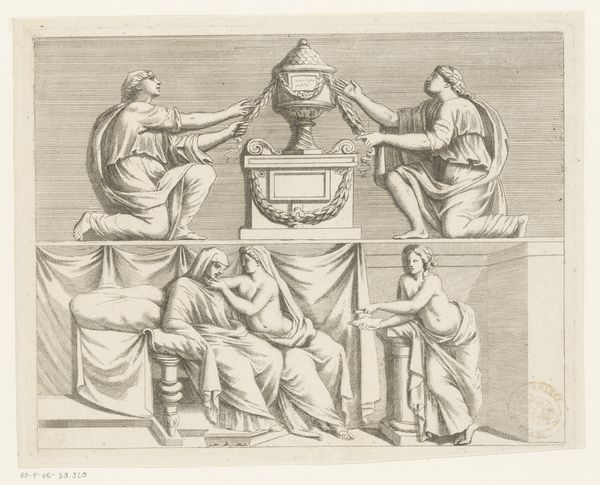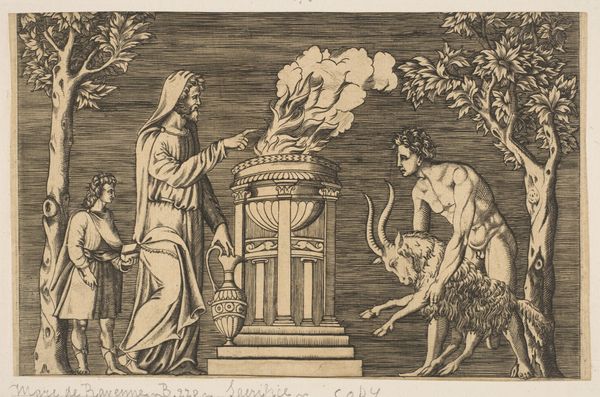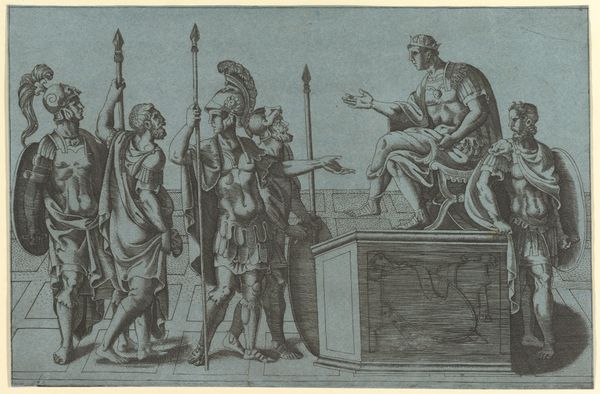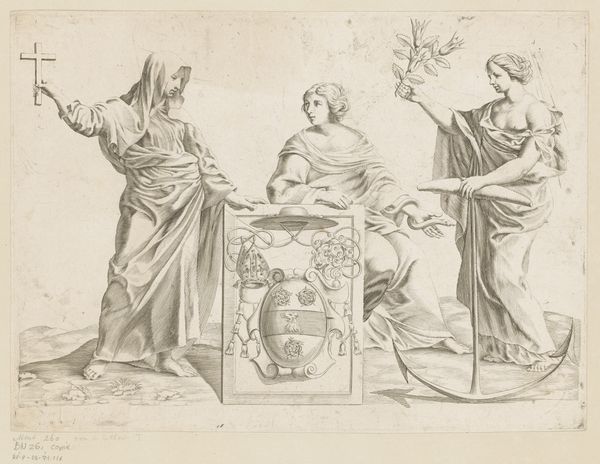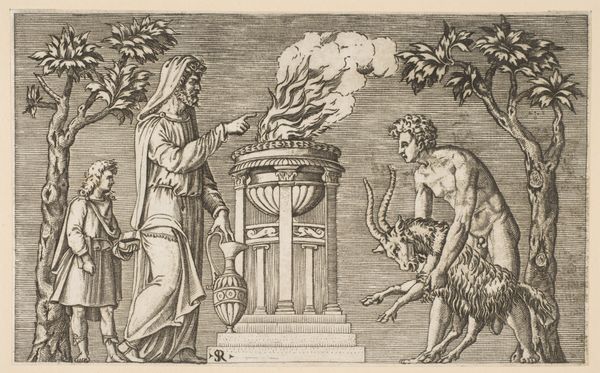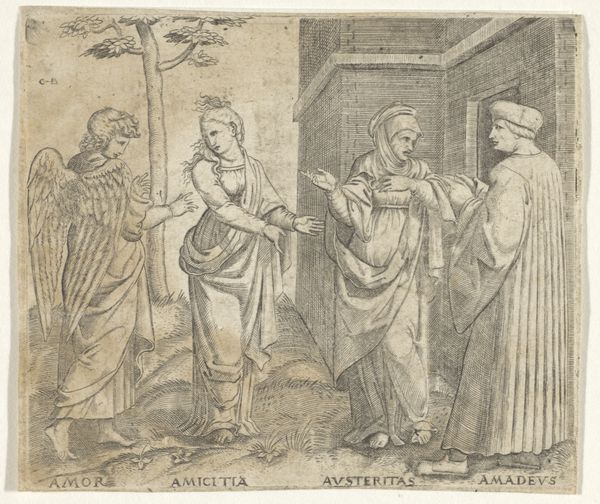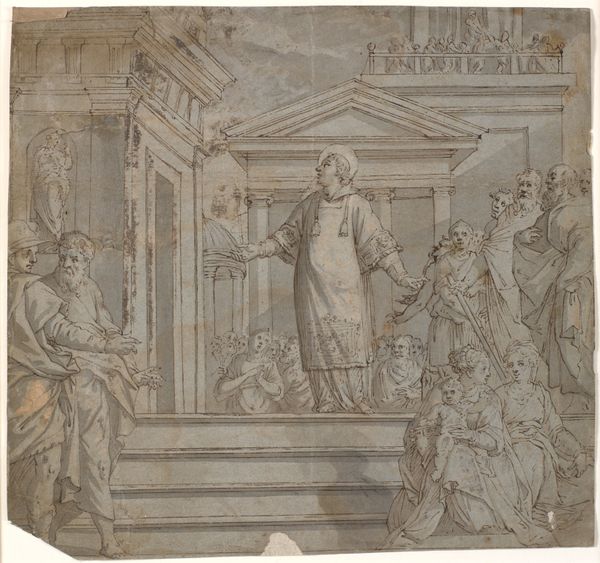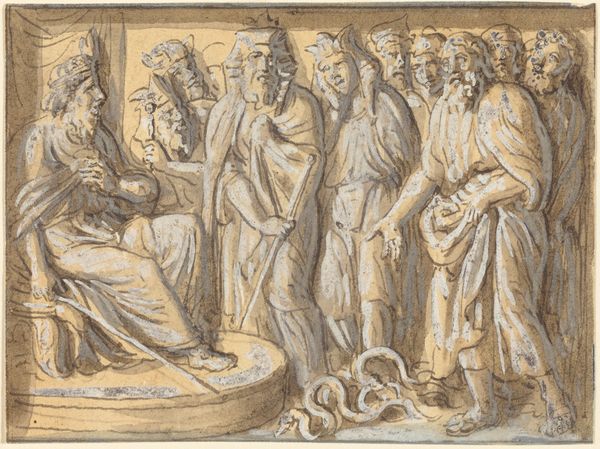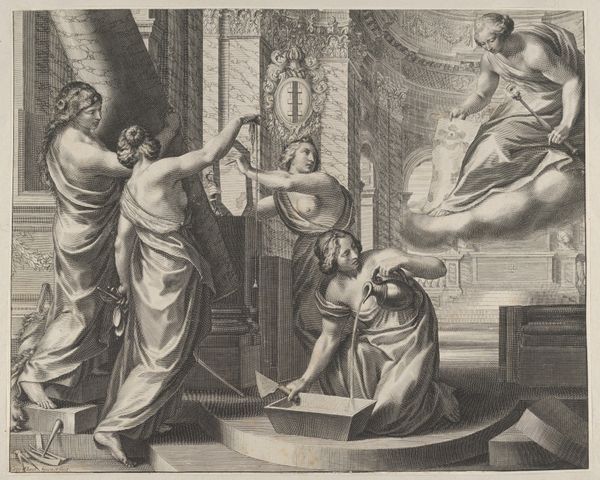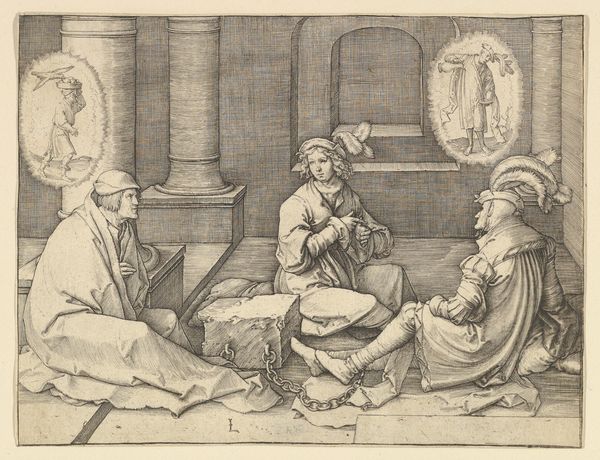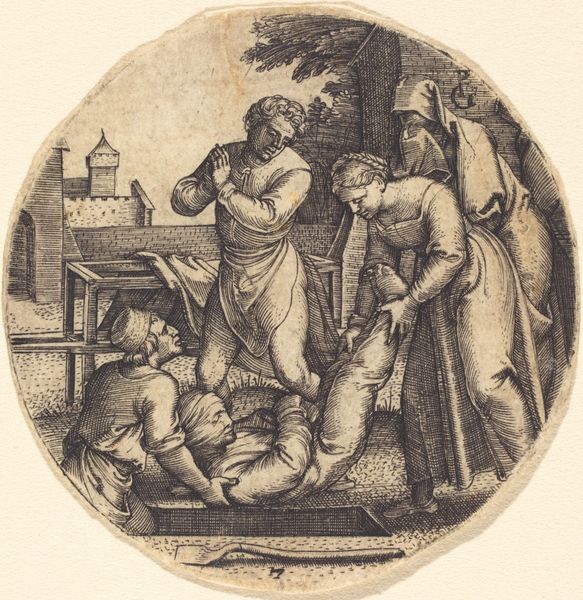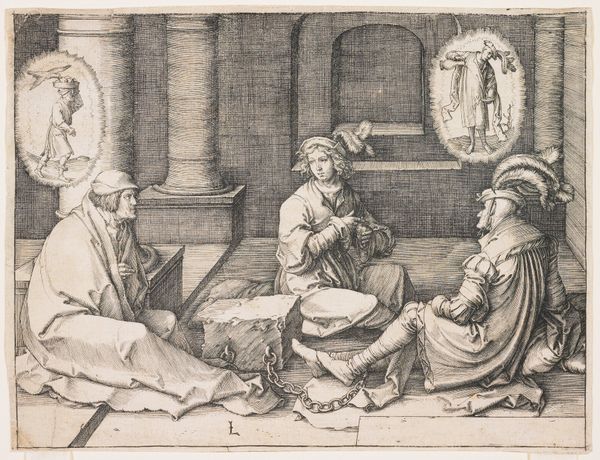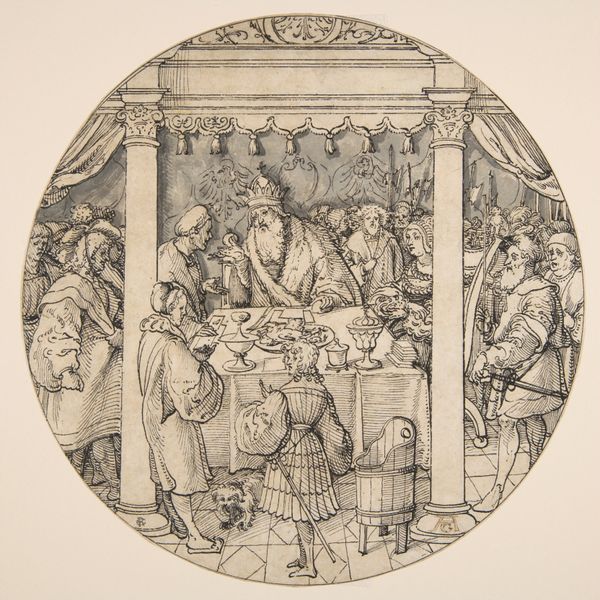
drawing, tempera
#
drawing
#
neoclacissism
#
tempera
#
figuration
#
history-painting
#
academic-art
Dimensions: 199 mm (height) x 369 mm (width) (bladmaal)
Curator: Nicolai Abildgaard's "The Creation of the Royal Library," dating from 1781 to 1784, offers a glimpse into the ambitions of enlightened patronage. It is a tempera drawing currently residing in the SMK, Statens Museum for Kunst. Editor: My first thought is that it seems almost ghostly, like a memory rendered in pale shades. The composition, the figures, the globe… everything feels like a delicate echo. Curator: That's perceptive. Consider the sociopolitical context. Abildgaard painted this during a period of intellectual ferment and royal aspiration. The library, commissioned by the Crown, symbolized Denmark's cultural ambitions and a desire for rational order in society. Look at how the figures, all men, are draped in neoclassical robes – the style meant to evoke ideas of classical learning. How might this construction of national identity intersect with existing power structures of gender and class? Editor: Right, it's an exclusive image of knowledge production. I'm struck by the rendering of the globe. Its placement draws my attention to the mechanics of the object. It seems carefully built, almost crafted – which resonates given your mention of nation-building. The library becomes another artifact that requires skill to build. Are the robes of those depicted a symbolic material of intellect as well? Curator: That’s an insightful connection. The clothing of the period, the labor that went into the craftsmanship of those garments - those are indeed powerful signifiers of status and cultural capital. There's an element of idealism, even utopianism, embedded here, in its own way promoting academic-art. But we must consider the absence of the everyday workers who actually built this institution, literally and figuratively. Who got access to this library? Who were excluded? Editor: So, a vision of intellectual expansion achieved through selective elevation and elision of the material processes that underpinned its production. In essence the very labour of the making is rendered invisible. Curator: Precisely. It underscores how notions of progress are inevitably shaped by structures of privilege. The work, in my view, invites us to think about knowledge production as a form of social and cultural negotiation, especially for those marginalized. Editor: And for me, seeing it laid bare inspires scrutiny regarding art and labor, which I suppose is its power. Curator: Agreed. Ultimately, this image reflects Denmark’s intellectual and social position, its material construction and how we engage critically with it today.
Comments
No comments
Be the first to comment and join the conversation on the ultimate creative platform.
